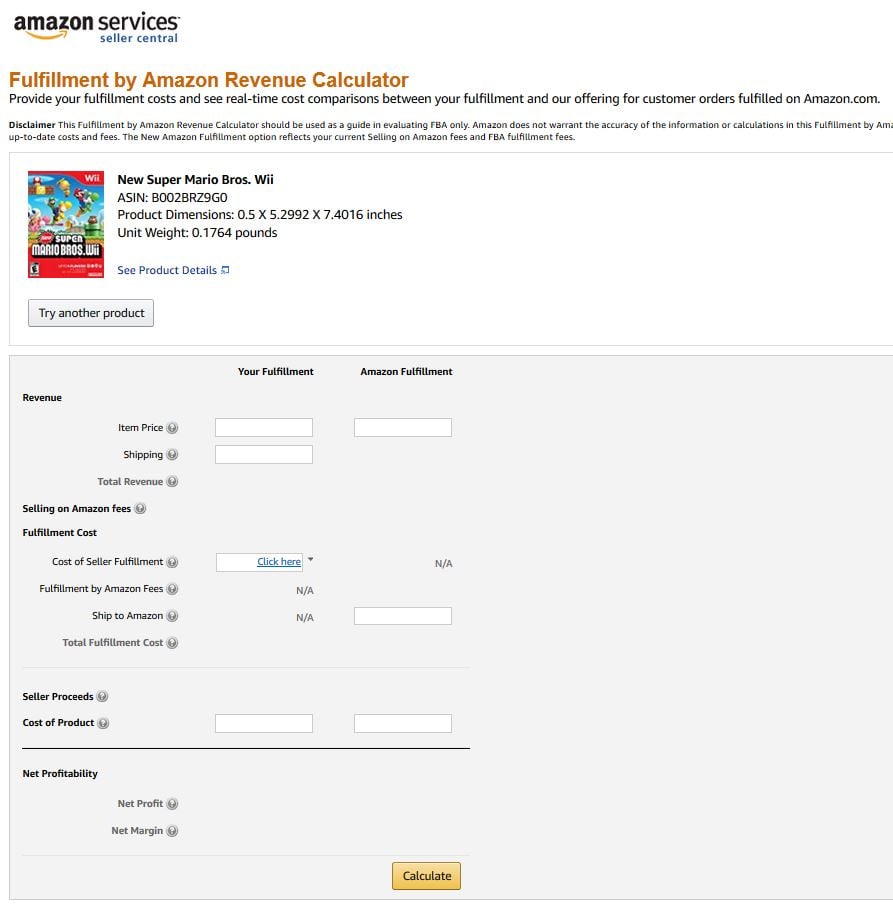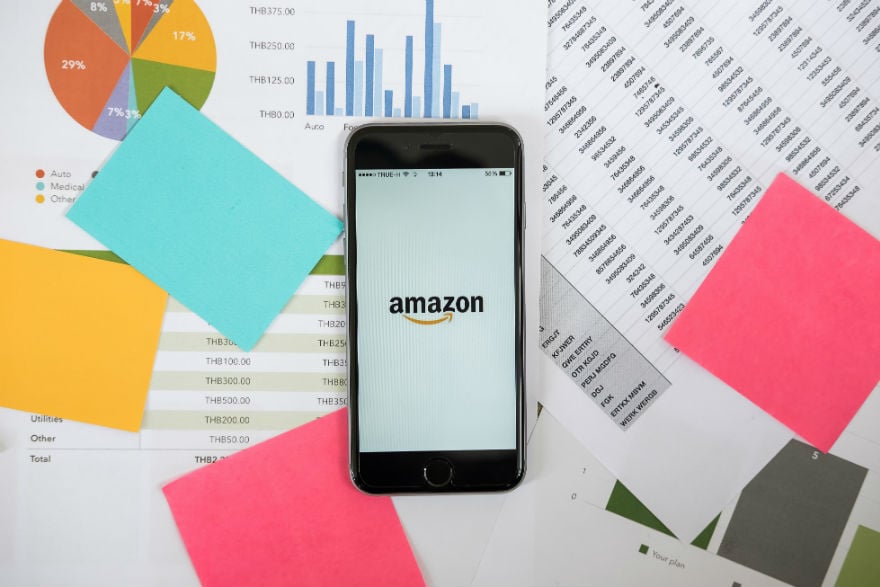You remember the story of Goldilocks, right? She broke into a house, stole food from the occupants, and use their property without permission. But the story also told an important lesson: there’s that sweet spot in the middle where things are just right. You can apply Goldilocks’s lesson when it comes to your Amazon PPC campaigns.
First, Analyse Your Amazon PPC Budget
At its simplest, a budget consists of:
- Costs How much do you have to pay to stock your inventory, pay your employees (and yourself) and pay for services to run your business?
- Revenue Only the amount of money coming in from what you’re selling.
- Profit margin How much money is in between your costs and revenue.
But let’s take a look at Amazon profit margin first.
Amazon has a revenue calculator you can use to quickly assess what your profit margins will be. There are other seller tools you can use, but this one’s great because all you have to do is input the fields and it does all the work for you.

You’ll also want to look at how competitive each product and category is when thinking about how much to spend on your Amazon PPC advertising, as well as how much of overall sales results from the PPC campaign.
Second, Take a Look at The Temperature of the Product and Its Industry
In general, we like the 25/25 rule. It can be a little complicated, so let’s work in reverse.
Let’s say you earned $1,000 in product sales last week. One-quarter of that (or 25%) resulted directly in the money you spent on your PPC, which is $250. When you were writing out how much to spend on your PPC, you anticipated getting $250 in sales from that, so you spent 25% of your Advertising Cost of Services (ACoS) on it, which is $62.50.
So, 25% of your ACoS should lead to 25% of your product sales coming from the PPC. The numbers can get a little swim-y, which is why it’s easier to work backwards from your expected sales. Having said that, there are a few exceptions.
- Competitive Category: Some products will reside in categories that are naturally more competitive in others. This may cause you to increase how much you spend on your Amazon PPC so that you get more sales and, more importantly, more visibility and recognition.
- Unique Identifiers: Try and narrow down your keyword search as specifically as possible. If you’re selling dog coats, using that term might result in a ton of listings. But if you enter in ‘small dog coats’, you’re going to narrow the scope. And by doing that, you can set yourself apart and make your PPC be even more targeted and efficient.
Related: 9 Tips to Boost Your Amazon SEO and Keyword Research
Third, Regular Analyse Your PPC Reports

Knowing how to create an efficient Amazon PPC campaign is only half the battle; the other half is knowing why what worked and what didn’t. And this is where your reports come in. They’ll help you understand your past mistakes and successes, and how to shape your future campaigns.
Reports show the last 60 days, so it’s terribly important to stay on top of them so you don’t miss potentially crucial details. If you’re forgetful about something like this, schedule a reminder on your calendar to download your report every other month.
Another thing to keep in mind is how long you should wait before making a change. We mentioned reports showing the last 60 days’ history, but that doesn’t necessarily mean you should apply the lessons from the last two months into changes for the next two.
There will be factors that influence the success of your PPC campaign, like seasonality, product popularity, brand visibility, social media effects, and other long-term shopping trends.
Let’s go back to our dog coats example. When it’s a gorgeous 25° outside, no dog is going to need a fleece-lined coat. So, you’re going to see slower sales during June, July and August. Don’t use that slow time to drastically alter your approach, as you should expect to see an uptick in sales for September, October and the following months. It’s important to keep both a short- and long-term view in mind.
Amazon Repricing Software
Another factor that can indirectly influence your Amazon PPC campaign is how much your products cost. Go too high, and buyers will click past you. But go too low, and you risk being seen as cheap and not worth it. Luckily, RepricerExpress allows you to create many rules so you can find that sweet Goldilocks zone and maximise your sales. To learn more and get the first 15 days free, register now. See what other sellers are saying.
Related: A Beginner’s Guide to Structuring Your Amazon PPC Campaign






